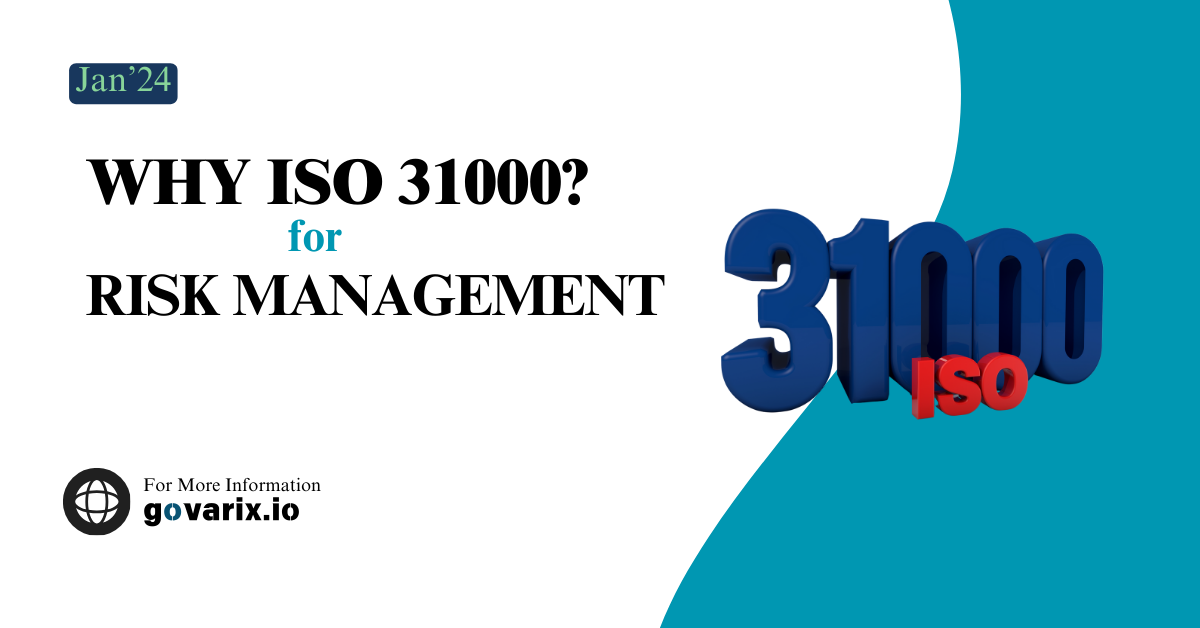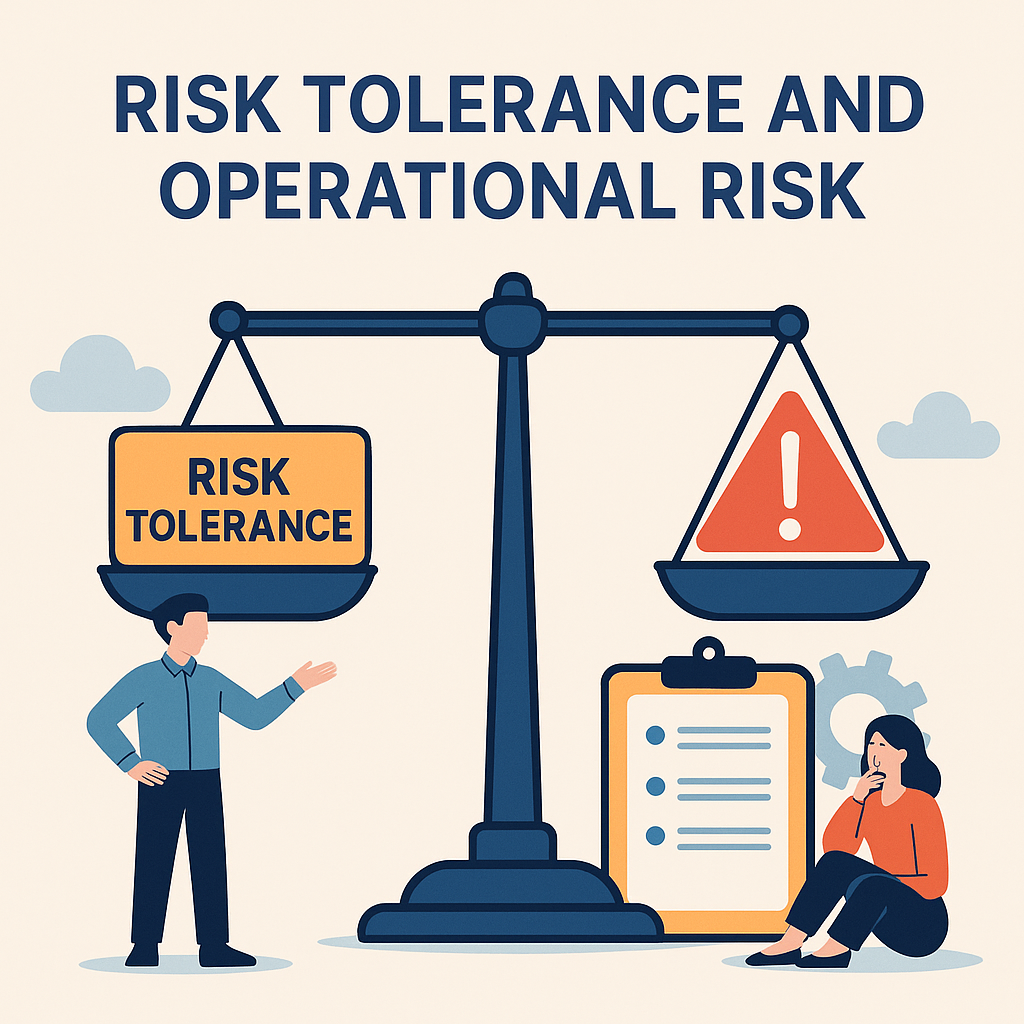Background
In today’s volatile business landscape, organizations of all sizes and industries face various uncertainties. These uncertainties—ranging from cybersecurity threats and financial risks to compliance challenges and operational disruptions—can impact an organization’s ability to achieve its objectives.
To address these uncertainties, organizations must implement a structured and proactive approach to risk management. ISO 31000 is an internationally recognized standard that provides principles and guidelines for managing risk. It serves as a universal risk management framework that businesses can adapt to their unique needs, regardless of industry or size.
This blog explores why every business need ISO 31000, its framework, guiding principles, risk management process, and how to design an Enterprise Risk Management (ERM) framework aligned with ISO 31000.
Introduction
Risk management is no longer an option—it is a necessity. Organizations that fail to address risks proactively may face severe consequences, including financial loss, reputational damage, regulatory penalties, and operational disruptions.
ISO 31000 provides a flexible and comprehensive approach to risk management. It integrates risk considerations into an organization’s decision-making process and strategic planning, ensuring that risks are managed efficiently. Unlike prescriptive standards, ISO 31000 does not impose rigid requirements. Instead, it offers a set of guiding principles and a structured framework that businesses can customize to their needs.
This article explores the importance of ISO 31000, its guiding principles, framework, and process, along with a practical approach to designing an Enterprise Risk Management (ERM) framework that aligns with ISO 31000.
Nature of Management Systems
Management systems establish structured approaches that enable organizations to operate effectively while complying with industry regulations and best practices. ISO management systems, such as ISO 9001 (Quality Management) and ISO 27001 (Information Security Management), focus on compliance and certification. In contrast, ISO 31000 is a principle-based framework that provides guidelines rather than mandatory requirements.
Key aspects of ISO 31000’s risk management approach include:
- Integration: Risk management must be embedded into an organization’s culture and decision-making processes.
- Customization: The framework should be tailored to the organization’s unique risk environment.
- Continuous Improvement: Risk management should be a dynamic process that evolves as risks change.
ISO 31000 ensures that risk management is not an isolated function but an integral part of governance, strategy, and operations.
Changing Risk Context for Organizations
The risk landscape is continuously evolving, requiring organizations to adapt their risk management strategies. Key factors shaping modern risk management include:
Technological Advancements
- Cybersecurity threats, data breaches, and AI-driven risks require organizations to be vigilant.
- Digital transformation introduces new operational and compliance risks.
Regulatory Compliance & Governance
- Stricter global regulations (GDPR, SOX, Basel III) demand robust risk management practices.
- Corporate governance frameworks now mandate active risk oversight.
Financial & Market Volatility
- Economic uncertainties, inflation, and geopolitical risks impact investment and operational decisions.
- Organizations must evaluate risk exposure in global supply chains and financial markets.
Environmental, Social & Governance (ESG) Risks
- Climate change, sustainability mandates, and social responsibility concerns are now key risk factors.
- ESG compliance has become a top priority for investors and regulators.
Given these complexities, organizations must transition from reactive risk management to proactive and strategic risk governance—which is precisely what ISO 31000 enables.
Structure and Approach of ISO 31000
ISO 31000 is structured around three core elements:
- Principles: Foundational aspects that guide effective risk management.
- Framework: A structured mechanism to integrate risk management into an organization’s culture.
- Process: A systematic approach to identifying, analyzing, and mitigating risks.
These elements ensure that risk management is not just a compliance activity but a value-creating function.
Guidance Provided by ISO 31000 – Principles
ISO 31000 outlines 11 key principles that organizations should follow for effective risk management:
- Creates & Protects Value: Risk management should support business objectives.
- Integrated into Processes: Risk considerations should be embedded in strategic decisions.
- Part of Decision-Making: Risk assessment should inform decision-making.
- Explicitly Addresses Uncertainty: Risk management helps manage unknowns.
- Systematic, Structured & Timely: A clear, consistent process ensures effectiveness.
- Based on Best Available Information: Decisions should be data driven.
- Tailored to the Organization: Risk strategies should reflect business needs.
- Considers Human & Cultural Factors: People’s behaviors influence risk perception.
- Transparent & Inclusive: Engaging stakeholders ensures informed risk governance.
- Dynamic & Responsive to Change: Risk management should evolve.
- Facilitates Continual Improvement: Learning from past risks enhances future preparedness.
Designing an Enterprise Risk Management (ERM) Framework as per ISO 31000
Implementing an Enterprise Risk Management (ERM) framework aligned with ISO 31000 requires a structured approach that integrates risk management into the overall governance, strategy, and operations of an organization. Below are the key steps in designing an ERM framework along with detailed explanations and practical examples.
Step 1: Leadership and Commitment
Effective risk management starts at the top. Senior management must demonstrate commitment to risk governance, set the tone for risk culture, and allocate necessary resources.
How to Implement:
- The CEO and board of directors should define the risk appetite—the level of risk an organization is willing to accept in pursuit of its objectives.
- A Risk Committee or Chief Risk Officer (CRO) should be appointed to oversee the implementation of risk policies.
- Ensure risk management is integrated into the organization’s performance evaluations and decision-making processes.
Example: A financial institution implementing an ERM framework must ensure that its board of directors approves risk limits for credit exposure. The CRO should report risk trends regularly, ensuring that risky lending practices are addressed before they become critical issues.
Step 2: Establishing a Risk Management Policy
A Risk Management Policy is essential to define how risks will be identified, assessed, treated, and monitored across the organization.
How to Implement:
- Develop a written risk management policy that aligns with the organization’s strategic objectives.
- Ensure the policy is communicated across all departments and stakeholders.
- The policy should cover risk governance structure, roles and responsibilities, and reporting mechanisms.
Example: A manufacturing company dealing with supply chain disruptions should outline in its risk policy how risks related to raw material shortages, logistics failures, and geopolitical risks will be handled. This can include alternative sourcing strategies and emergency supplier agreements.
Step 3: Understanding Organizational Context
Every business operates in a unique internal and external environment. Identifying these factors helps organizations design an ERM framework tailored to their risk profile.
How to Implement:
- External Context: Assess regulatory requirements, economic conditions, market competition, and technological advancements.
- Internal Context: Identify key business objectives, organizational culture, operational processes, and existing risk management capabilities.
Example: A tech startup expanding into international markets must assess regulatory risks, such as data privacy laws (GDPR in Europe, CCPA in the US), and cybersecurity threats. A strong compliance and cybersecurity strategy should be integrated into the ERM framework.
Step 4: Integration with Business Processes
Risk management should not be treated as an isolated function but rather embedded into daily business operations.
How to Implement:
- Integrate risk assessment into strategic planning, finance, HR, operations, and IT processes.
- Ensure risk management is part of budgeting and resource allocation.
- Create a risk-aware culture by incorporating risk discussions into board meetings and departmental reviews.
Example: A retail company expanding into e-commerce must integrate cyber risk management into its IT operations, ensuring that proper firewalls, encryption, and fraud detection systems are in place to prevent data breaches.
Step 5: Risk Identification and Assessment
Identifying risks is a crucial step in designing an effective ERM framework. Organizations should use structured techniques to uncover both internal and external risks.
How to Implement:
- Conduct Risk Workshops with stakeholders to gather insights on potential risks.
- Use risk registers to document and categorize risks.
- Employ risk assessment tools such as SWOT analysis, PESTLE analysis, Bowtie Risk Model, and Monte Carlo simulations.
- Assess risks based on likelihood (probability) and impact (severity).
Example: A hospital identifying risks might assess potential cyberattacks that could compromise patient data. The likelihood of a ransomware attack and its impact on patient safety would be analyzed, with controls such as multi-factor authentication and backup systems implemented accordingly.
Step 6: Risk Treatment & Response Planning
Once risks are identified, organizations must decide how to treat or respond to them. There are four primary risk treatment options:
- Risk Avoidance – Eliminating activities that expose the company to excessive risk.
- Risk Reduction – Implementing measures to reduce the likelihood or impact of risks.
- Risk Sharing (Transfer) – Outsourcing or insuring risks.
- Risk Acceptance – Tolerating the risk if it aligns with business objectives.
How to Implement:
- Develop a Risk Treatment Plan detailing how each risk will be managed.
- Prioritize risks using a Risk Matrix.
- Assign owners responsible for mitigating risks.
Example: A construction company operating in a hurricane-prone area may choose to reduce risk by enforcing strict safety protocols, share risk by purchasing insurance, or avoid risk by relocating project sites.
Step 7: Monitoring, Reporting, and Continuous Improvement
Risk management is an ongoing process that requires regular monitoring, reporting, and updates to keep pace with changing business environments.
How to Implement:
- Establish Key Risk Indicators (KRIs) to track risk exposure.
- Use risk dashboards for real-time risk monitoring.
- Conduct regular audits and risk assessments to update risk profiles.
- Implement lessons learned from previous risk events.
Example: A bank using machine learning to detect fraudulent transactions should constantly monitor its fraud detection algorithm’s accuracy and update risk parameters based on emerging cyber threats.
Final Thoughts on Designing an ERM Framework
Designing an ERM framework based on ISO 31000 ensures that risk management becomes a core component of an organization’s governance and decision-making processes. By following these structured steps, businesses can proactively identify, assess, and mitigate risks, thereby enhancing resilience and sustainability.
Comparison of ISO 31000 Against Annex SL
ISO 31000 differs from other ISO standards that follow Annex SL, a common structure for management system standards (e.g., ISO 9001, ISO 14001, ISO 45001). Key differences include:
- ISO 31000 is principle-based, while Annex SL standards are compliance-driven.
- ISO 31000 does not require certification, making it flexible and adaptable.
- ISO 31000 emphasizes leadership, culture, and continuous improvement, whereas Annex SL focuses on process standardization.
Organizations using Annex SL-based standards can integrate ISO 31000 into their existing management systems.
Conclusion
In today’s uncertain business environment, risk management is a strategic necessity. ISO 31000 provides a structured, yet adaptable framework that helps businesses identify, assess, and mitigate risks effectively.
By integrating ISO 31000 into corporate governance and strategic decision-making, organizations can enhance resilience, improve compliance, and gain competitive advantage.
If you want to learn more about risk management, do explore other articles.
References
- ISO 31000:2018 – Risk Management Guidelines (International Organization for Standardization)
- IRM Report: Standard Deviations – A Risk Practitioners Guide to ISO 31000:2018
- PECB Whitepaper – ISO 31000: Risk Management Principles and Guidelines
- PUB100426 – ISO 31000 Overview (ISO Official Publication)
- ISO 31000:2018 Standard Document








